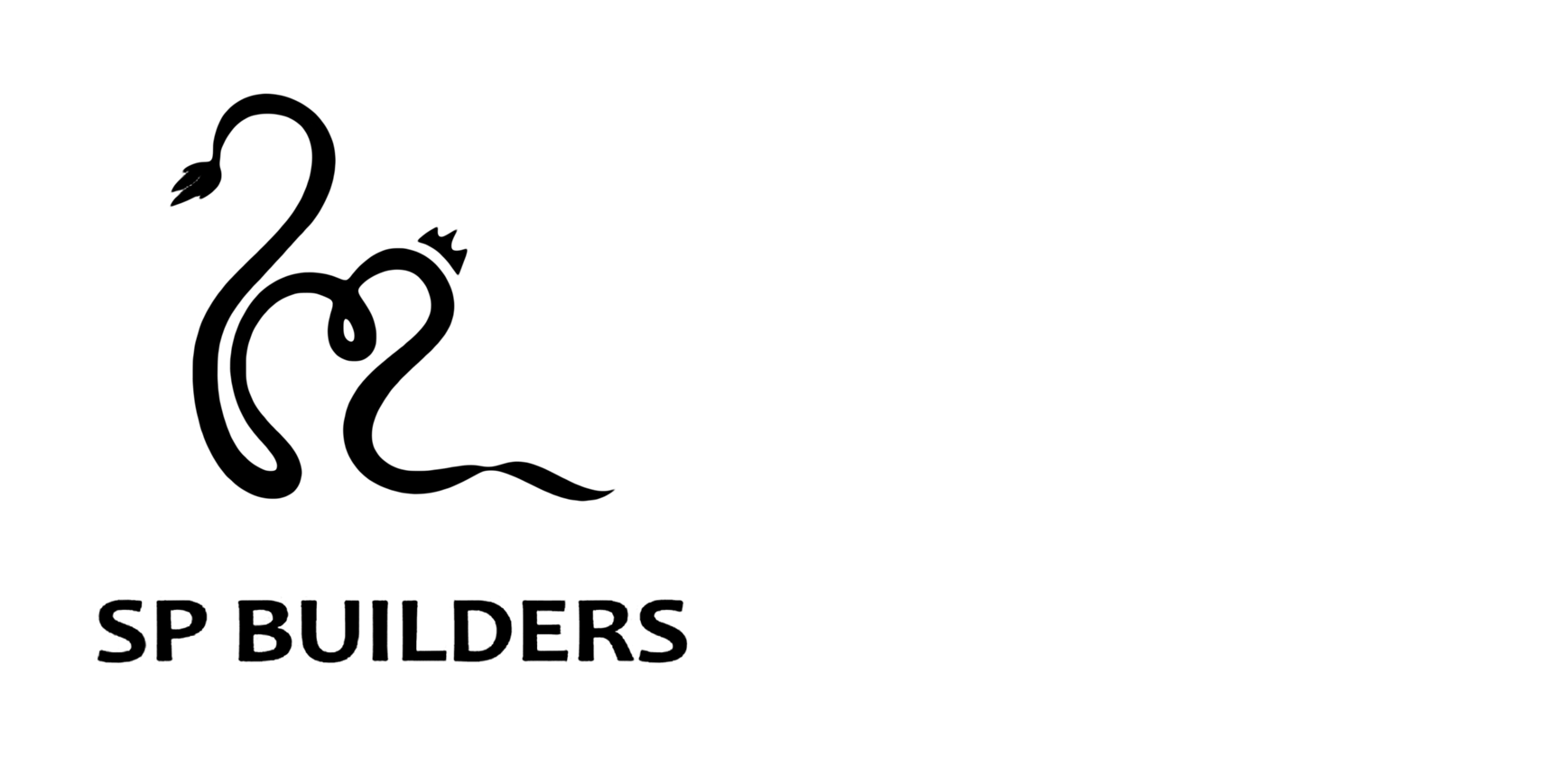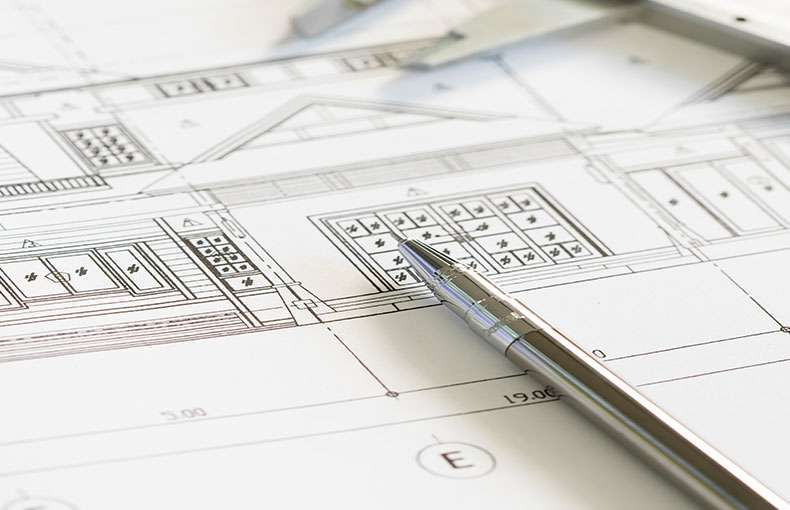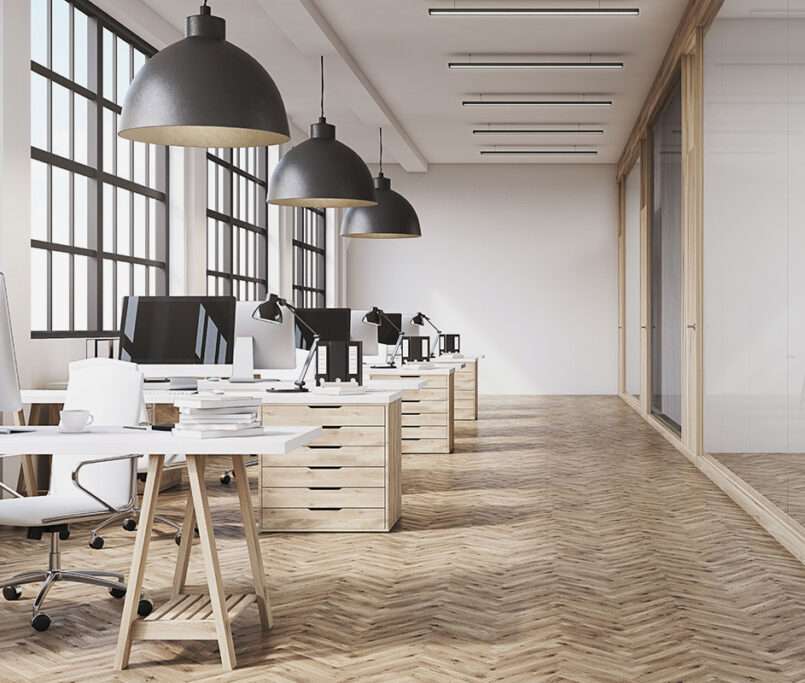Creating Productive Workspaces: Key Considerations for Commercial Interiors
1. Prioritizing Ergonomics for Employee Comfort
Employee comfort is critical for maintaining productivity, and ergonomic design helps reduce strain, improve posture, and prevent fatigue.
- Adjustable Furniture: Desks and chairs with adjustable heights allow employees to personalize their setups.
- Ergonomic Chairs and Desk Accessories: Providing ergonomic chairs, keyboard stands, and footrests can help maintain health and comfort during long work hours.
- Standing Desks and Flexible Seating: Standing desks and seating options like balance balls and ergonomic stools promote movement, improving focus and circulation.
Tip: Create designated areas with comfortable seating for casual work or brainstorming sessions to encourage creativity.
2. Lighting: Balancing Natural and Artificial Light
Lighting is one of the most important elements in any workspace, directly affecting mood, energy, and focus.
- Maximize Natural Light: Whenever possible, place workstations near windows to benefit from natural light, which can reduce eye strain and boost mood.
- Adjustable Artificial Lighting: Task lighting at each desk or work area allows employees to customize their lighting based on needs.
- LED and Energy-Efficient Lights: These not only save energy but can also be less harsh than fluorescent lighting, creating a softer and more comfortable environment.
Tip: Include ambient lighting options like warm LED lamps or dimmable overhead lights to provide flexibility for different times of day.
3. Creating Functional Layouts for Workflow Optimization
A well-organized layout can streamline tasks, encourage teamwork, and ensure that the workspace meets the needs of the business.
- Open Layouts with Defined Zones: Open layouts foster collaboration, while zones within the open plan allow for different work activities, such as quiet work or team discussions.
- Dedicated Meeting and Collaboration Spaces: Having separate areas for meetings, brainstorming, and project work helps keep noise levels down in individual work areas.
- Flexibility for Future Growth: Modular furniture and adaptable layouts make it easy to reconfigure spaces as teams grow or new projects begin.
Tip: Use glass partitions to create private spaces without obstructing the visual flow, keeping the area open and light.
4. Integrating Technology Seamlessly
Modern workspaces require technology that’s easy to use and accessible to everyone, without clutter or distraction.
- Wireless and Digital Solutions: Wireless chargers, screen-sharing tech, and Wi-Fi-enabled devices minimize cable clutter and make it easier for employees to stay connected.
- Conference Room Tech: Video conferencing screens, smart whiteboards, and sound systems are essential for remote meetings and presentations.
- Charging Stations and Device Docks: Strategically placed charging stations keep devices powered without disrupting the workspace flow.
Tip: Use cable management solutions, like under-desk trays or cord organizers, to keep workstations tidy.
5. Acoustics: Managing Sound for Focus and Collaboration
Noise management is crucial in commercial interiors to ensure that employees can concentrate while still facilitating open communication.
- Soundproofing Materials: Carpeting, ceiling panels, and acoustic tiles reduce noise levels, especially in open-office layouts.
- Dedicated Quiet Zones: Create areas where employees can retreat for focused work without distractions.
- Acoustic Dividers and Furniture: Use sound-absorbing dividers, booths, or even plants to dampen sound in busy areas.
Tip: White noise machines can help mask distractions in areas where soundproofing is limited.
6. Designing for Well-Being with Biophilic Elements
Incorporating natural elements can reduce stress, increase focus, and enhance employee satisfaction.
- Indoor Plants and Green Walls: Adding plants or vertical gardens creates a refreshing ambiance, improving air quality and adding a touch of tranquility.
- Natural Colors and Textures: Wood, stone, and neutral color schemes provide a calm, natural aesthetic that contrasts with the hustle of daily work.
- Access to Outdoor Spaces: If possible, creating access to a patio, balcony, or even a small garden space can give employees a mental break, enhancing creativity.
Tip: Incorporate planters or greenery into desk dividers or shelves to bring biophilic elements directly to individual workstations.
7. Personalization and Branding
Workspaces that reflect company culture and brand values foster a sense of belonging and pride among employees.
- Brand Colors and Logo Accents: Subtle branding, such as walls painted in brand colors or logo decals, helps create a cohesive identity.
- Art and Custom Decor: Displaying artwork, team photos, or motivational quotes makes the space more welcoming and aligned with company values.
- Encourage Personal Touches: Allow employees to personalize their desks with photos, plants, or small items, adding warmth and individuality.
Tip: Use open shelves or display cases to showcase achievements, company milestones, or staff recognitions.










